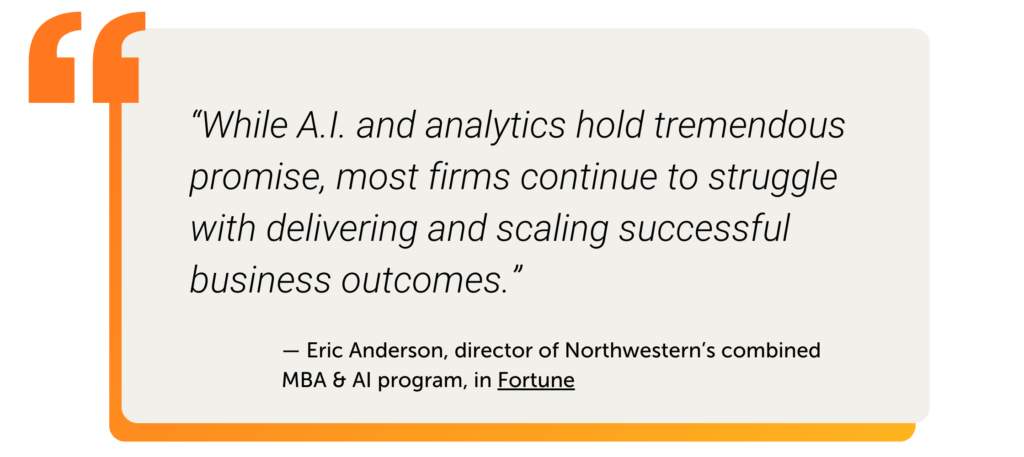Welcome to WeSolv’s monthly newsletter for our employer and university partners! Here, we’ll break down trending DEI x hiring news and equip you with the insights you need to support, attract, and hire talented underrepresented advanced degree candidates. Click here to receive these newsletters directly to your inbox each month.
Hello fellow leaders,
Prosecutor. District Attorney of San Francisco. Attorney General of California. U.S. Senator. Vice President of the United States.
Or a “DEI hire.”
Kamala Harris has been called all but one of these rightfully. Last month, shortly after President Biden dropped out of the 2024 running, Rep. Tim Burchett (R-Tennessee) told CNN that “one hundred percent (Harris) is a DEI hire.” Rep. Harriet Hageman (R-Wyoming) made headlines for similar comments, and Rep. Chip Roy (R-Texas) had to be put in his place by Rep. Jasmine Crockett (D-Texas) after calling Harris a “DEI vice president.”
We could devote this space to defending how the highest-ranking woman ever to hold U.S. office got to this point in her career. But that only lends legitimacy to those who undermine her accomplishments.
Liking and voting for Harris is one thing. Acknowledging her standing as a qualified professional is another, and something we should all be able to do.
Unfortunately, “DEI hire” or “diversity hire” language is all-too common a dog whistle used to bill underrepresented people as unworthy. That’s been the case in corporate and university settings, where diversity initiatives (and, prior to its overrule, affirmative action) are often pointed at whenever non-white, non-cis male people advance. (E.g. “They got that promotion/got into that university because they’re (insert identity)!”)
“DEI hire” language positions underrepresented students and talent as unqualified and undeserving, when in reality:
- Underrepresented folks typically have to overcome more challenges and be more qualified to land a coveted job or get into a distinguished program, and
- It’s well-represented student and candidate pools gaining identity-tied advantages. Multiple studies have shown it’s still easier to be hired if you’re white or have a white-sounding name.
Not only that, but making “DEI” a pejorative directly contradicts the facts: diversity, equity, and inclusion benefit everyone. Companies that score highest for gender and racial diversity are 39% more likely to outperform companies with the lowest diversity scores, and racial diversity in higher education classrooms is shown to improve academic outcomes for all students.
Yet, now that “DEI hire” has spilled over from corporate and collegiate spheres into political ones, it’s gaining momentum, from right-wing pundits blaming Trump’s assassination attempt on “DEI hiring” in the Secret Service to Elon Musk saying Alaska Airlines’ panel blowout happened because of DEI.
The effort to turn diversity into a slur is moving ahead, with gusto. And it has a lot of company and university leaders concerned.
One way these leaders can protect their teams and candidates from these “DEI hire” attacks? Clear, transparently shared candidate selection criteria. That’s useful to you and to underrepresented candidates and students. Consider: Our Underrepresented MBA Candidate Experience 2024 report found that 60% of PoC job seekers (vs. 50% of white job seekers) want more transparency into companies’ selection criteria and recruitment processes.
For this issue, we’ll look at the hallmarks of transparent, uniformly applied consideration criteria. Then, we’ll catch you up to speed on news impacting underrepresented candidates + advanced degree seekers and share resources to help you support this group of talent.
To saying “DEI” loudly and proudly,
Stella Ashaolu
CEO and Founder, WeSolv

- Define clear job requirements.
And focus only on the skills and tasks that are truly required. Avoid exhaustive laundry lists, which aren’t helpful and can make you appear disorganized or unfocused to boot. Get at the heart of the role, and enlist multiple relevant team members to help identify requirements and KPIs.
- Assign weights and scores.
Bucket the skills you’ve landed on into categories, and assign each category a weighted value based on its importance. Use a consistent scale for scoring, and get more specific than “1 = poor, 5 = excellent.” That can be confusing for interviewers and fuel shot-in-dark scoring.
An alternative for a top score could be: “(5) Exceeded expectations. Demonstrated expert-level proficiency in >90% of skills. Gave 2+ specific examples of skills in action and shared 1+ relevant new ideas to the business.”
- Publish the criteria alongside your job posting.
This might feel transgressive at first — shouldn’t this information be kept a secret?! — but the reality is that there’s no reason for candidates not to know what they’re being scored on. Keeping it secret, as with a lack of salary transparency, tends only to favor certain parties.
- For candidates who don’t get the job, explain why.
Telling people in detail why they weren’t chosen for a role may sound awkward. Can’t you just shoot off a “we’ve gone with another candidate” message and call it a day?
You could, but it won’t leave those candidates feeling like their time and effort was appreciated. That can harm your employer brand in the long run. Instead, (briefly) explain why someone wasn’t chosen, citing specific aspects of the selection criteria rubric. This facilitates trust and sets up candidates to re-strategize, fill their experience gaps, and better go after the next role at your company — or encourage others to do the same.
Learn how WeSolv’s Case Challenges utilize transparent selection criteria + the principles of skills-based hiring to hire top talent based on demonstrated work output.
———————————————————-

———————————————————–

- I&D. That’s SHRM’s new acronym replacing DEI. Posting about it on LinkedIn, SHRM’s President and CEO cited “societal backlash and increased polarization” as driving the choice to drop Equity. (More.)
- Digital workers gone awry. And we don’t mean remote workers. Sarah Franklin, CEO of HR platform Lattice, said her company shelved AI bot “employees” like “Devin the engineer” after backlash. (More.)
- A dip in applications — but not across the board. 2023’s year-over-year 4.9% decline in MBA applications wasn’t evenly applied across programs; some have seen increases. (More.)
- Defect from DEI at your own risk. Companies that are shelving inclusive culture and hiring initiatives are setting themselves up for long-term challenges. (More.)
- Another (possible) win for salary transparency. If signed, a new bill just approved by Massachusetts state lawmakers would mean their state joins the list of 10 other states requiring salary ranges in job descriptions. (More.)
———————————————————————————–

- Leveraging Real Projects to Get the Job: How to Connect Students with Top Hiring Employers. That’s the focus of our free webinar Thurs. Aug. 15th (2-3pm ET), and it’s not too late to sign up!
- Why companies are afraid of diversity data, and what we need to do about it if we want inclusion-focused programs to continue.
- How universities can proactively diversify recruiting companies, including tactical strategies for outreach and a step-by-step action plan.
Stella Ashaolu is the CEO and Founder of WeSolv, a platform that connects companies to more diverse candidates and automates assessing skills and competencies with real projects to reduce hiring bias. She is also a Founding Partner and Interim Managing Director of Fifth Star Funds, the preeminent philanthropic venture fund investing in Black founders at the “friends and family” stage in Chicago.
As an MBA candidate at USC Marshall School of Business, Stella experienced the harsh realities of recruiting for strategy and consulting roles with a non-traditional background and limited network. It was there she realized the power of experiential learning and the need to democratize access to underrepresented candidates to build and showcase the skills necessary to get hired. With 15+ years of management consulting, big data, and predictive analytics expertise, Stella brings her lived experience to building a research and data-driven technology solution to improve diversity hiring for enterprise customers such as Salesforce, Pinterest, and Discover and a network of over 35,000 diverse business candidates. In addition to serving as a Techstars alumni mentor and 1871 mentor, Stella is a vocal leader and diversity advocate in the Chicago tech ecosystem. She also holds a BA from UCLA.



